Stat of the Match: Arsenal 2-2 Liverpool
Liverpool did something to Arsenal which hadn't happened for 18 months. Did a touchline move from Mikel Arteta ultimately backfire on the Gunners' boss?
Liverpool played their hardest fixture of the season so far on Sunday, returning from the Emirates Stadium with a point after a 2-2 draw. Their performance was high on spirit, low on chances created. It was also high on quality when the time was right.
There was much talk in the build up surrounding the players Mikel Arteta would not be able to call upon. Per Capology, his starting XI for the game was paid an average of £159,545 per week, more than any side Arne Slot has fielded in the Premier League this season. Plucky little Arsenal, eh?
The Reds, for the record, began with their lowest paid team of the campaign so far (£136,364 per man). If their pay packet is a crass way to assess player quality, it’s a method not entirely without merit.
And that’s before you get to the additional benefits of home advantage, having an extra day to prepare and having played at home rather than away in midweek against weaker opposition. RB Leipzig are one place above Chelsea in the Opta Rankings, Shakhtar Donetsk are the same distance above Ipswich Town.
Liverpool overcame something bigger than any of these factors, though, and we’re not talking about the Gunners’ prowess from set plays. The Reds achieved something against Arsenal which had not occurred for 18 months.
Last season, Arteta’s men led at half time in 18 Premier League matches, the most in the division. They won every single one of them, a remarkable record. For context, Manchester City dropped eight points from their 17 leading positions at the midway point of games, while Liverpool drew three of 11 such matches (against Brighton, Manchester United and Aston Villa).
The Gunners have already drawn twice after leading at the 45-minute mark in 2024/25. However, in both instances they went down to 10 men. On Sunday, the Reds became the first team to recover from a half time deficit against an 11-man Arsenal since West Ham did so in April 2023. That instance occurred one week after Liverpool had rallied from 2-0 down to earn a point against them at Anfield. William Saliba can boil down his value into the fact he missed the three games mentioned here.
For a league example at the Emirates Stadium, you have to look back three years. We’re talking BBB era here, before Big Bill. Arsenal led Crystal Palace 1-0 at half time in October 2021, though later needed a 95th minute goal to salvage a 2-2 draw. City turned the same deficit into a 2-1 win later that season, but a home team red card had once again had an impact upon the outcome.
The question after Liverpool recovered on Sunday was how much was it down to them improving and to what level did Arsenal bring it upon themselves by playing too defensively? And as a secondary query: if the Gunners had gone ahead for a second time two minutes after half time rather than two before, would that have changed their approach? There would have been no Arteta team talk to emphasize his message had the score line gone to 2-1 early in the second half rather than at the conclusion of the first.
Whatever the cause, the momentum of the match undoubtedly shifted as demonstrated on the timeline below (via Sofascore).
Despite this, the home side’s passing didn’t become less adventurous following the interval. The proportion of the passes which went forward rose from 47 per cent prior to half time to 59 per cent after it. The position of the back four will have influenced this, though, in terms of how much space was on offer in either direction.
Per MarkStats, the Gunners have had the second highest defensive line in the Premier League this season, with their average action occurring 50.01 metres from their goal. They would perhaps top the rankings were it not for the second half barricade they produced at the Etihad last month.
Even with that making up a sizeable chunk of the sample, that’s still a very high defensive line. Only once in the final five seasons of the Jürgen Klopp era did Liverpool match that figure - posting 50.24 in 2021/22 - and their high line was frequently held up as being some form of kamikaze madness.
Thanks to DataAnalyticEPL, we can see how the defensive line heights shifted throughout the match, with Arsenal denoted by the red line and Liverpool in blue (an act of sacrilege). While the confusing ‘y’ axis makes it hard to be certain, the Gunners didn’t appear to reach their 50m average too often in the second half.
Look what happened shortly before the blue dot which represents Mohamed Salah’s goal: the Arsenal line hits its peak for the whole game. The same source showed that the Gunners’ press went from its match low to high between the 70 and 80 minute marks too.
It’s worth reviewing the five minutes between Jurriën Timber going off and Liverpool scoring, as it may highlight the point at which the game turned. In that period, Arsenal had their first shot for 33 minutes since their second goal, with Kai Havertz blazing it wide. About 90 seconds later, the Gunners pressed, forced a throw-in and Arteta encouraged his team to get forward. He gestured to the crowd to liven up too. The Reds then had the ball in the attacking third shortly afterwards but nothing came of it, which allowed Arsenal to attack. That move broke down, Liverpool countered, it became 2-2.
Between half time and Salah’s goal, Liverpool had 68 per cent possession. Despite dominating the ball, they were able to score on an Opta-defined fast break (counter attack). Space in which to run which had been denied them became ever so slightly more available. They took advantage superbly.
The Reds last scored a goal of this nature when averaging at least that much possession across a match during their 3-0 win over Nottingham Forest in September 2023. In fact, they did it twice that day, although as one came from an opposition corner, that’s to be expected when Liverpool are on point.
It’s hard to exploit your ability in transition when a goal down against a side who are happy to let you have the ball. It would be going far too far to pin the blame on Arteta for Liverpool being able to do so. He probably wish he didn’t encourage his team forward quite so much with 12 minutes to go, though.



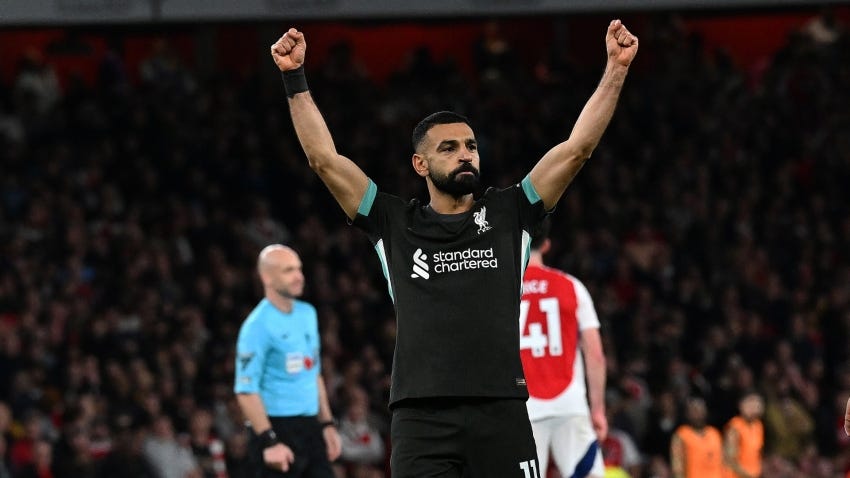

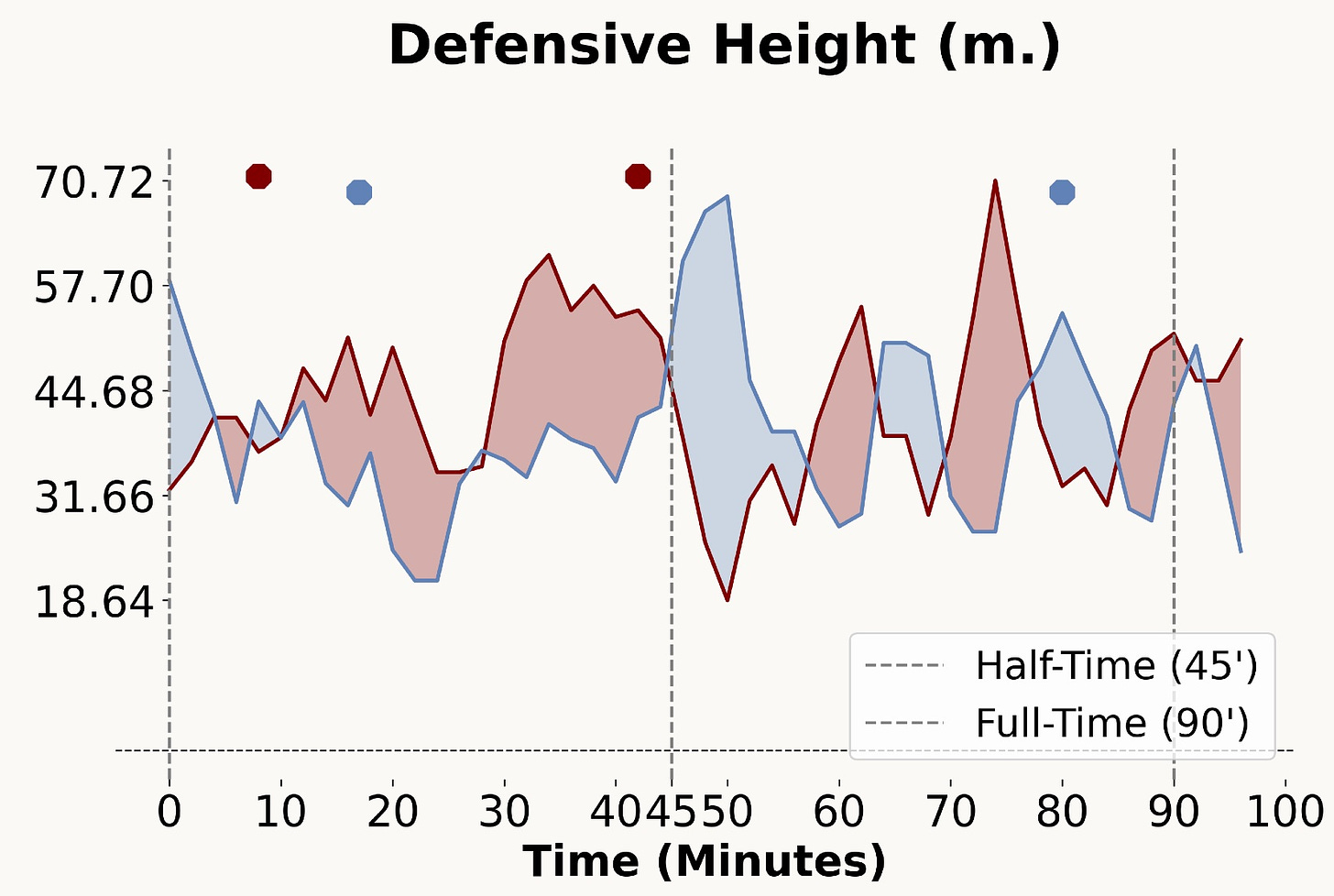
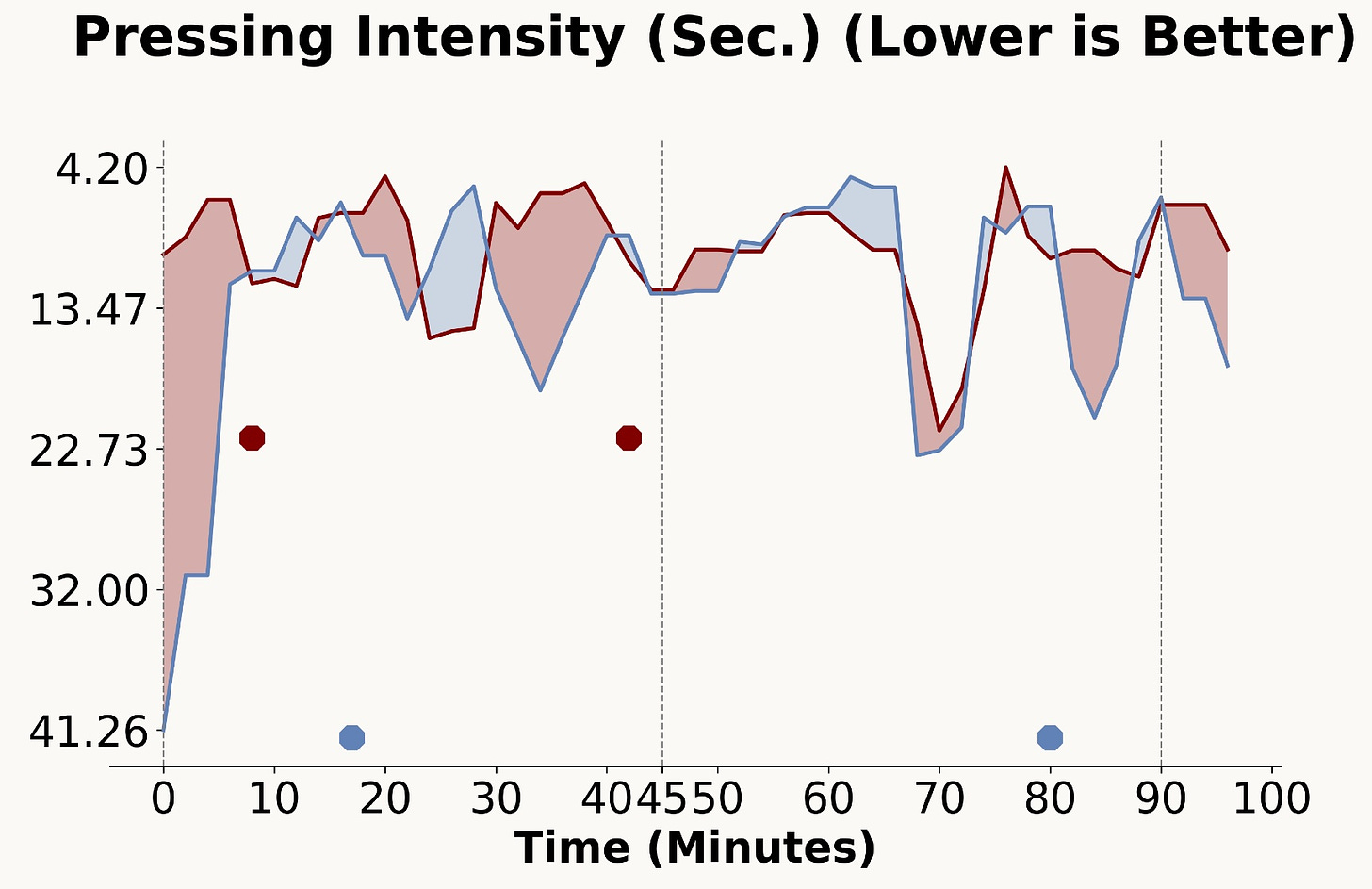
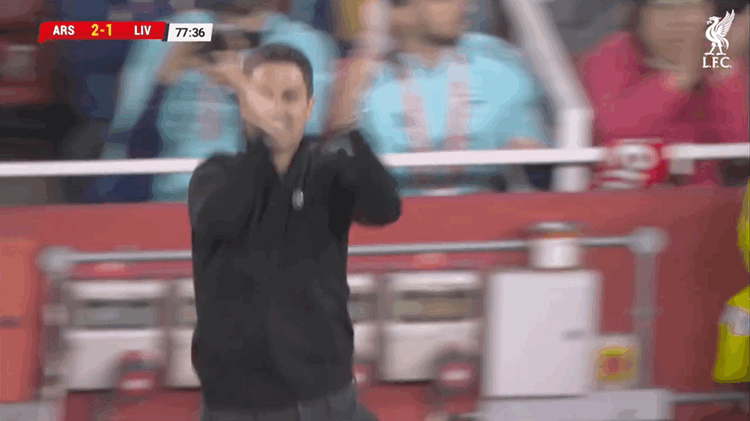
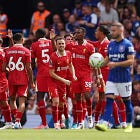


Great stats and historical context, Andrew.
Confusing to me how holding a high line Arsenal could still afford 68% possession to the opposition in the second half - or am I misunderstanding something?
(I only listened on radio to some of the match.)
So many interesting takes on the match, which was an odd one. Neither team great in attack, yet both having periods of being well on top.
Kudos for finding the stat to justify Arteta’s faith in his team to carry the 2-1 to the final whistle, as many have been slaughtering him for his team’s passive second half.